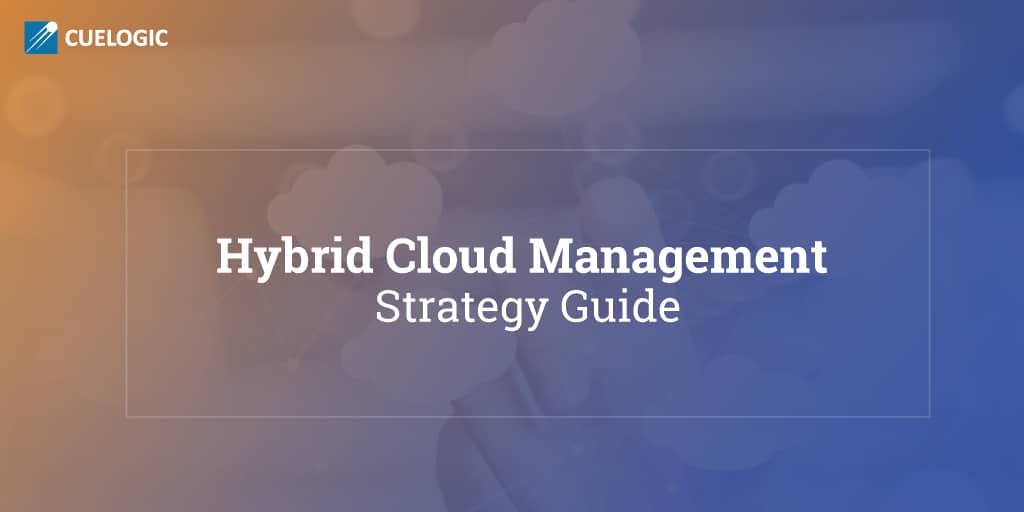“Hybrid cloud computing enables an enterprise to balance isolation, cost and scaling requirements. To implement hybrid cloud services successfully, IT leaders need to introduce an internal cloud services brokerage (CSB) role responsible for the governance, demand management and delivery of cloud services.” – Milind Govekar, Managing Vice President, Gartner Research.

A hybrid cloud model consists of at least one private and public cloud service. The best-of-both-worlds approach as it is called, hybrid cloud enables organizations to control their own IT environment, while using the public cloud’s scalability and flexibility to their advantage. The hybrid cloud user count is set to triple by 2018, even as more companies look for better security, availability and elasticity, at a comparatively low cost. Here are some primary pointers that a hybrid cloud manager has to think about strategically:
Effective Practices
- Public and private cloud selection is a critical responsibility. Making two clouds work as a single entity will always be an issue. For a start, expanding the currently effective management practices and strategies to the hybrid cloud would be beneficial to the organization.
- The service provider has to inculcate best practices for creation, changes, patching and implementation across the team. For instance, maintaining a development library stocked with version-controlled production images creates a secure and effective configuration.
- Ensure configurations are either public or private cloud capable. If not, clearly specify – to which cloud is the image linked.
Security
- Security and data integrity are among the main concerns in a public cloud. Hybrid cloud enables businesses to use in-house storage for sensitive operations. Security must focus on access controls, encryption and user management. The latter usually commences with a directory like the Lightweight Directory Access Protocol (LDAP). Integration of on-premises directories with cloud-based directories (example: AWS Directory Services) can also be done.
- Directories can be hosted in cloud by enterprises. Yet, maintaining an alternate directory during hybrid cloud implementation that is easily integrable with several cloud providers is a sound idea too.
- Key management is another security aspect. If not a public key infrastructure, opt for the Microsoft Key Vault or the AWS Key Management Service. This allows you to manage the encryption keys, without depending on the cloud provider’s encryption.
Resource Allocation
- That hybrid clouds can run on a private or public cloud as per your organization’s need is a major selling point. This interchangeable process is not simple, though. Ensuring availability of suitable machine images, prior to running any jobs, is one requirement. Configuration management tools like Puppet and Chef can serve this purpose in both private and public clouds. These tools automate the image-build process while reducing the possibility of misconfiguration errors. You can thus save on hours of runtime and workflow interruptions.
- Deploying application using the Docker container technology is another option. Using hybrid cloud management platforms for quota enforcement, monitoring control usage and access policies, self-service portals, etc is a viable alternative too.
- Monitoring data flow volume, particularly when moving huge data chunks from private to public cloud (usually in big data analytics) is a key resource allocation step. Allocating ample time to transfer this data becomes a priority then. In certain cases, data replication is handy. Storing the same data in both private and public clouds help avoid network latency (especially with analytics applications). Consider cloud data storage costs as compared to performance before opting for data replication.

Billing Issues
- Billing is at the core of cloud business. You don’t want a client taken aback by the monthly cloud expenditure. The service provider thus needs to keep the client updated with all the current and upcoming bill cycle details. He can choose from many of the billing software that provides detailed cloud expense reports. For example, VMware vCloudSuite offers cost management, operations and automation, while Cloudyn helps the client make optimum cloud use, recommends the timely use of AWS (Amazon Web Services). RightScale offers analysis and monitoring tools, providing a resourceful view of databases, firewalls, etc. These tools also permit you to choose the level of control the client wants to implement.
- Budget controls, controlling operational systems, looking out for unprecedented production system demands and acting accordingly, is a hybrid cloud management hazard.
Summary
The four main strategy areas that a hybrid cloud manager must look into are enlisted above. Related concern areas include:
1. Comprehending the areas that require hybrid cloud management.
2. Identifying the right cross-platform tools.
3. Defining management policy with regard to cloud migration, installation and configuration issues.
4. Creating policies with regard to sensitive data and intellectual property.
5. Specifying how cloud users will receive costs and usage data.
